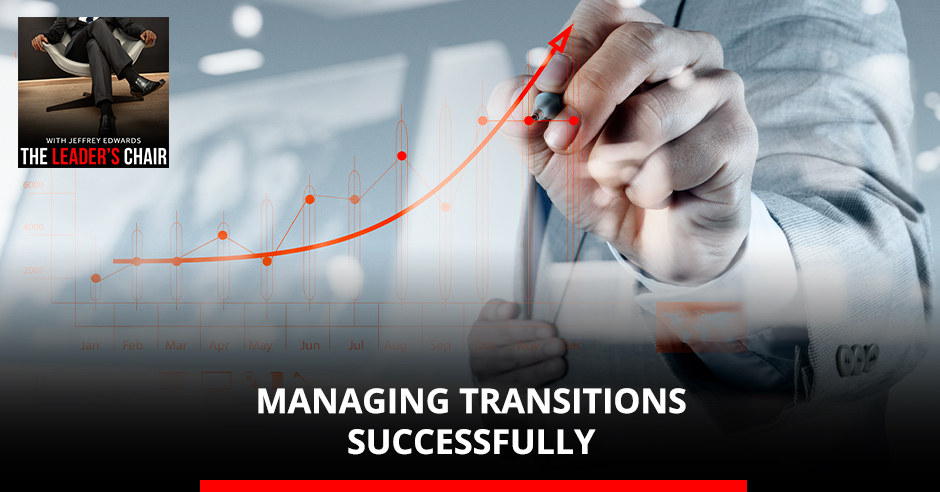
Change is, without doubt, the only constant in this world — and it’s one of the biggest things that leaders must tackle every single day. In this episode, I explore how leaders can learn to navigate different phases of transition in collaboration with their teams.
After all, managing change successfully is a true mark of effective leadership!
Check out this episode if you want to learn:
- The difference between change and transition
- How to harness transition to beat the odds
- Why you need to let your team ‘grieve’ any new shifts
🎧 Listen to the podcast here:
Managing Transitions Successfully
How you gone through a change in your personal life, in your business or your community? I’m willing to bet the answer is ‘yes’. When we look around us, the law of change states that change is constant. We’re constantly evolving, and moving towards a newer level of being. It’s a perpetual motion right up until the day that we are no longer here.
It’s no different for businesses: whether it’s a switch-up in leadership, a new corporate direction, a different business strategy, new hires or whole new departments, change is everywhere — so why is that, so often, change goes badly? According to studies, 80% of Fortune 500 companies report that major transitions in management don’t go well.
For a brief moment in 2000, Time Warner and AOL joined forces to become ‘Time Warner’. It was an exciting time — the dot.com bubble was making lots of entrepreneurs millionaires, and a unique opportunity meant that TV and film could now integrate with the internet. Time Warner was ready for action… but then, nothing happened for year after year.
Something that was supposed to generate billions of dollars went up in smoke because of mismanaged change (want the details? You can learn more here).
Change V.S. Transition
Change is something that’s external to us — we don’t control it. Often, when we’re going through a change, we tend to focus on the change itself, even though that’s just one part of any transition. The second layer that comes with change is transition, and it’s often forgotten about in large change initiatives.
In 1991, author and consultant William Bridges wrote Managing Transitions, as a follow-up to his popular book, Transitions. In his book, Bridges explained that part of the reason why companies struggle with change is that the leadership are laser-focused on the structural changes that are happening in the organization.
'Change is only one part of any transition.' Share on XWhat tends to be ignored, forgotten or even minimized is the transitions that people are experiencing on an individual level. The definition of transition is the “internal mechanism”: an internal movement that we all go through. Let’s take a simple example: it’s raining outside.
- The Change = it was sunny, now it’s rainy.
- The Transition = as you prepare to go out the door, you’re wondering, ‘Am I going to get wet? Is it going to be a miserable drive on the way to work? Is the traffic going to hold me back? Am I going to be late? Am I going to get my pants all dirty?’ — etc., etc.
The transition becomes the decision point: do I want to go forward, or do I want to stay here? The possibility of losing what you already know (in this case, clean pants!) and the threat of the unknown may not be all that motivating for you.
So, what is the element of transition that leaders need to be focused on? Here are some tips, using Bridges’ three phases of transition.
Top Tips for Business Transitions
Phase 1: The Endings
As a leader, it’s important to recognize that whatever the change — from using a new project management tool to selling off your offices — you’re bringing something to an end point for your team. In 2008, I was working for a global IT company, and my company was acquired. The new company had an entirely different way of operating, even down to the administrative systems. Some of my colleagues were hanging on to the hope that some of our processes would remain intact, like how we managed our expense reports, or the access to our library.
It was a real blow when they realized that was all going to go away.
That resistance to the new stopped them from smoothly integrating into the new company. As a leader, are you acknowledging what your team may be feeling when going through a change? They might be feeling fear, denial, anger, sadness — maybe even a little disoriented or lost. How much time are you allowing for them to feel that?
Your team has spent time perfecting how they can be most effective in your environment, only to have that all change. While you can’t stop the change, you can at least show them that you understand, that you know it’s going to be tough. Recognizing that, yes, it’s an end — and to honour the legacy, so you can all move forward together.
What Bridges speaks about is giving people the opportunity to grieve — to take a deep breath, let it all out, and focus on the next steps with a new, positive outlook.

Managing Transitions: Companies struggle because they often focus on the structural changes that are happening in the organization.
Phase 2: The Neutral Zone
This is the nebulous middle. If you’re a Trekkie fan — and I am a quiet one! — you might think there’s a Romulan thing going on there, and Klingon. But really, it’s that place between here — where you are — and the next phase.
This is where a lot of companies trip up. In this second phase of transition, there’s still a lot of internal chatter that goes on. Team members might be asking: what is my role going to be? Where do I fit in? What do my skills or my experience mean? Am I going to be outdated — or is my company going to be outdated? Am I going to have an opportunity to learn, or at least acquire new resources to help me grow?
As a leader, your role is to acknowledge these questions, and to get ahead of answering some of them by thinking about the transition from a business, career and leadership perspective. Ask yourself: what are some ways you can help your team navigate through that zone of uncertainty — the Neutral Zone? How can your team provide feedback and input on the transition — are you able to create an open forum in person, or through a webinar?
As a leader, how often are you ‘managing by walking around’? Getting out on the floor, connecting with your people in any way possible, to help them feel that they are being heard and acknowledged? It may seem like a small thing, but research shows that when people have had an opportunity to express themselves, much of the nervous, anxiety energy is diffused, helping to propel them forward.
Phase 3: The New Beginning
Finally, when you’re through The Neutral Zone, it’s time to start envisioning the future — your business’ new beginning.
This is less about forming a corporate vision and mission statement, and more about painting a picture of what the new reality will be. How vivid is that vision going forward? How clear are the objectives and expectations, and also the roles and responsibilities for everyone — yes, in terms of creating new results, but also having room to grow, learn and feel safe, as well?
Effective leadership means keeping your eye on the external change — but also being a resource to mobilize your team, to help them manage the transition. 80% of those Fortune 500 companies who didn’t deal with change well — what would have happened if they had applied any of these strategies?
Change and transition. These two words might sound the same, but the next time you go through a change cycle, remember: there is a key difference, and knowing these Three Phases is the ticket to managing transitions successfully.
📌 Important Links:
- ‘Managing Transitions‘ & ‘Transitions’ – books by William Bridges
- ‘The Big Idea: The New M&A Playbook‘ – report in Harvard Business Review
Love the show? Subscribe, rate, review, and share!
Join The Leader’s Chair Community today on Facebook and Twitter.





